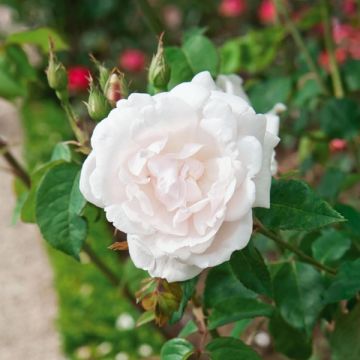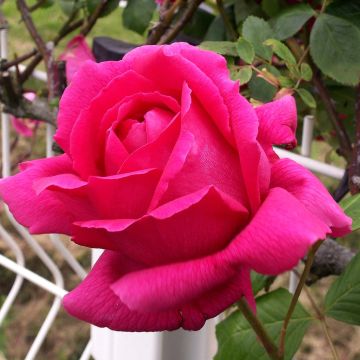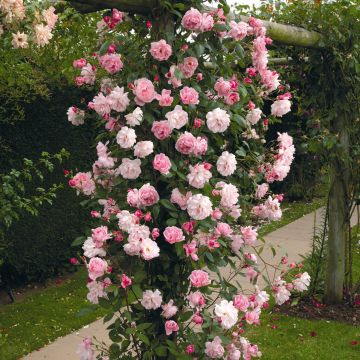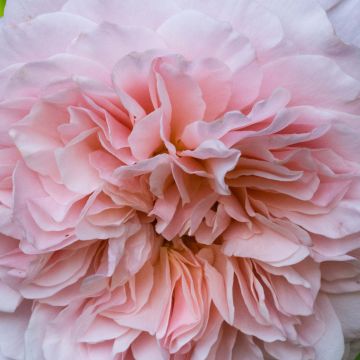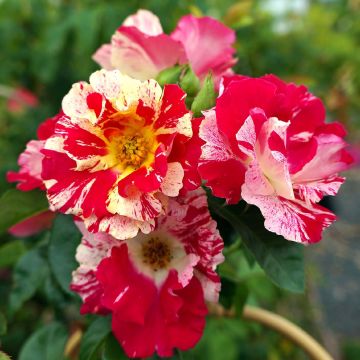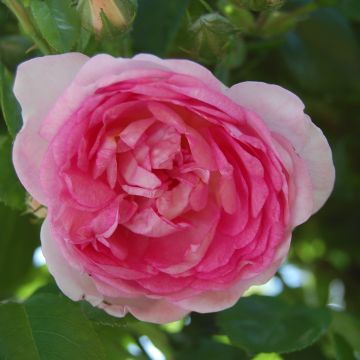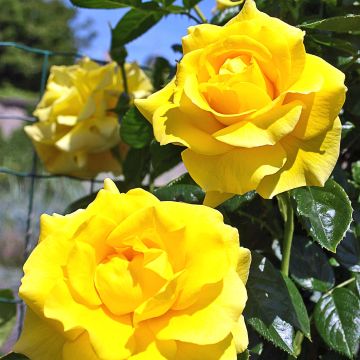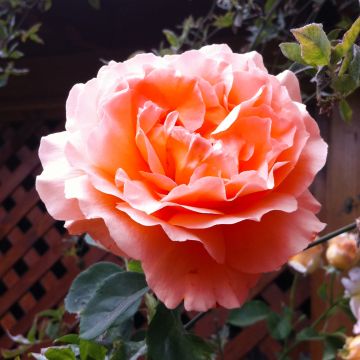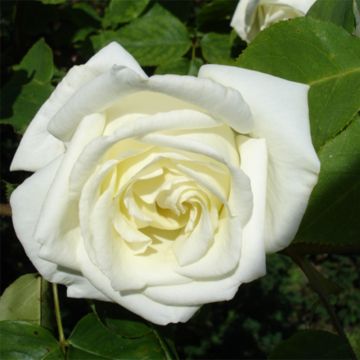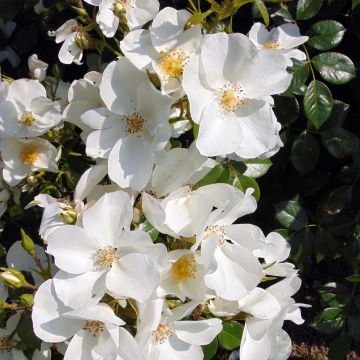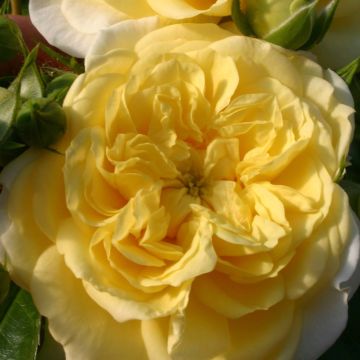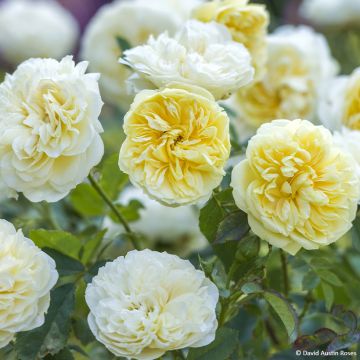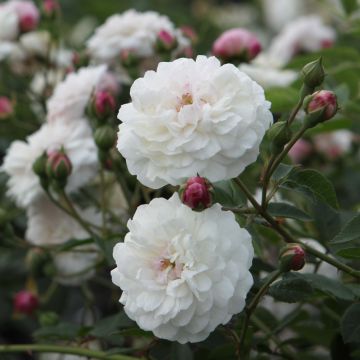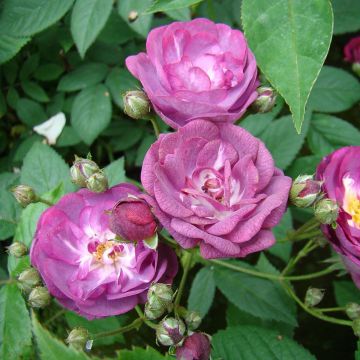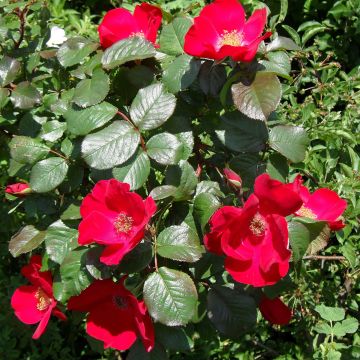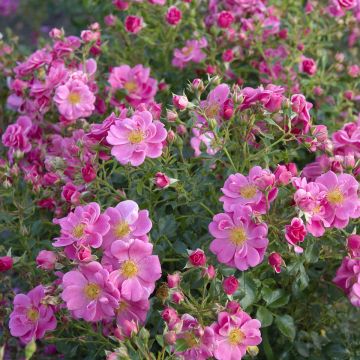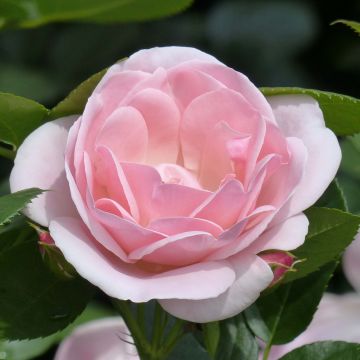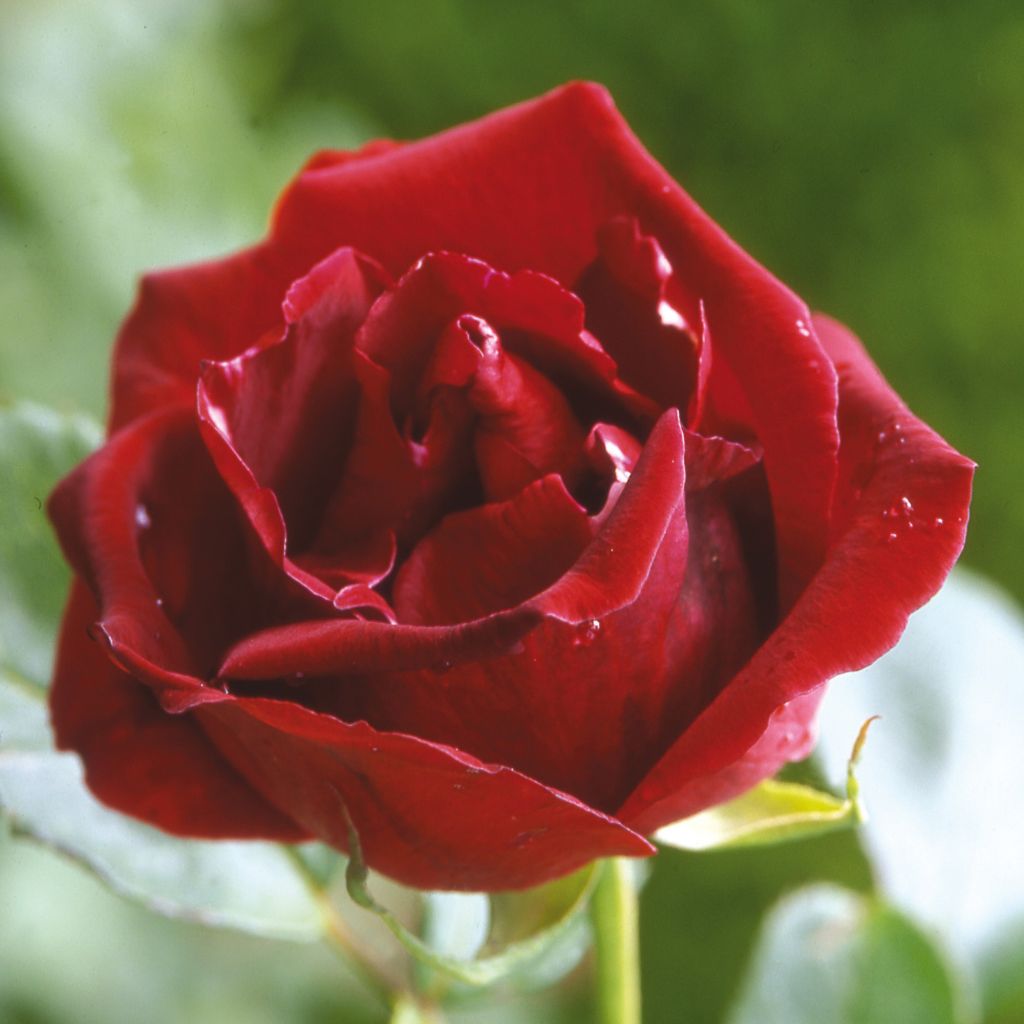

Rosa 'Guinée'
Rosa 'Guinée'
Rosa Guinée
Rose
This item cannot be shipped to the selected country
Delivery charge from €5.90
Delivery charge from €5.90
Delivery to Corse prohibited
More information
Schedule delivery date,
and select date in basket
This plant carries a 6 months recovery warranty
More information
We guarantee the quality of our plants for a full growing cycle, and will replace at our expense any plant that fails to recover under normal climatic and planting conditions.
From €5.90 for pickup delivery and €6.90 for home delivery
Express home delivery from €8.90.
From €5.90 for pickup delivery and €6.90 for home delivery
Express home delivery from €8.90.
Delivery to Corse prohibited: UE law prohibits the import of this plant from mainland France to Corse as part of the fight against Xylella fastidiosa. Please accept our sincere apologies.
More information

Does this plant fit my garden?
Set up your Plantfit profile →
Description
The 'Guinea' Climbing Rose, a powerful evocation of historic Tea roses, is undoubtedly the most sumptuous of climbing roses with dark red flowers, a true homage to the black beauties from distant lands where summer is endless. Its opulent roses are woven of crimson satin and velvety in a perfumed whirlwind in which black reflections drown, imprisoning the heavy fragrance of ancient roses. They are double, heavy with petals, shaped like open cups and of an unchanging colour, embroidered with a surprising heart of golden stamens. Its vegetation, on the other hand, is rather average and sensitive to extreme cold. It is, therefore, best suited for mild climates.
The 'Guinea' Rose is part of the complex family of hybrid tea roses. It is very close to historic tea roses, which are not very hardy, generally have a climbing habit, and are sensitive to severe pruning. It was created by the French rose breeder Charles Mallerin in 1938. It is a sarmentous rose with a flexible habit and thorny stems reaching 3 to 5 metres (10 to 16 feet) in height and 1 to 2 metres (3 to 7 feet) in width, depending on the growing conditions. Its growth is of medium vigour, and its dark green, shiny and deciduous foliage is quite susceptible to diseases such as black spot and powdery mildew, which will require preventive treatment. It stands out for the unique colour and texture of its large solitary roses, 10 cm (4in) wide, and its heady fragrance, awarded by the City of Lyon in 1938. While its summer flowering is dazzling, the repeat flowering is irregular and depends on the care given to the plant.
'Guinea' is simply a magnificent rose, full and dark, to be showcased on a small post, a column, trained on an arch near the terrace, even in a small garden, to enjoy its exceptional fragrance fully. It is incomparable for adding a touch of theatricality, planted above slightly romantic beds. It pairs well with the mauve roses of Blue Girl, Sissi, or the white corollas of the English rose Winchester Cathedral. It is an ideal companion for flowering shrubs (buddleias, mock oranges, hibiscus) and perennials such as bellflowers and foxgloves, adding immense charm.
Report an error about the product description
Rosa 'Guinée' in pictures
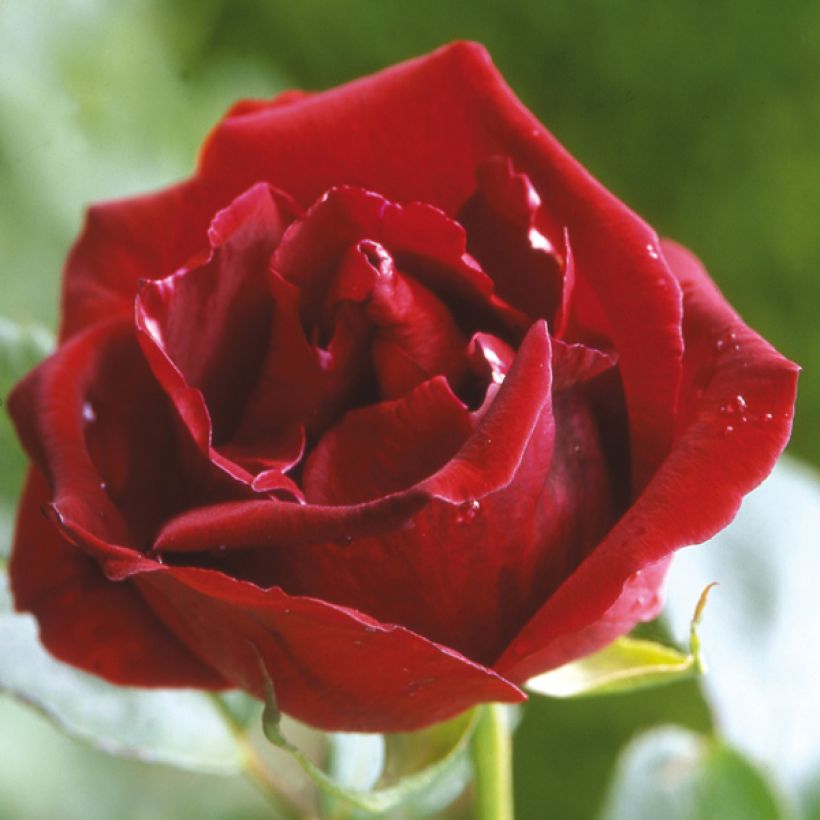

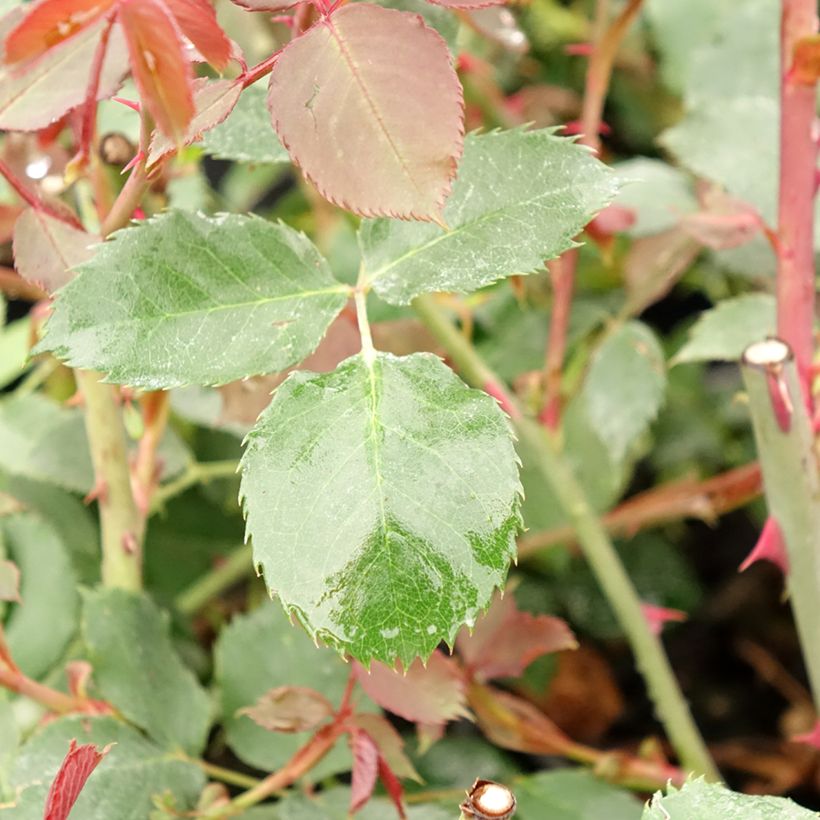

Plant habit
Flowering
Foliage
Botanical data
Rosa
Guinée
Rosaceae
Rose
Cultivar or hybrid
Other Climbing Roses
Planting and care
The 'Guinée' climbing rose thrives in sunny locations with fertile soil and mild climates. Its hardiness is limited to temperatures above -12/-15°C (10.4/5°F). To ensure healthy growth, it is essential to take preventive measures against rose diseases and regularly fertilise the plant to promote autumn regrowth. When planting the rose in a pot, use well-worked soil and crumble it well. Add an amendment such as blood, fish, and bone at the bottom of the planting hole. After planting, generously water the rose to remove air pockets. Water the plant regularly for a few weeks in dry weather to facilitate rooting. For optimal flowering, train the branches to grow horizontally whenever possible.
Pruning of repeat floweringl roses should be done at the end of winter. If its size bothers you, you can shorten it, but avoid cutting it back too much as it would harm the flowering. Thin out the branches by removing dead wood and unsightly branches. Throughout the summer, removing faded flowers promotes even more abundant flowering.
Roses often become stained or unsightly at the end of summer, but it is not a problem for their development. These stains are a natural phenomenon and do not harm the rose.
Planting period
Intended location
Care
-
, onOrder confirmed
Reply from on Promesse de fleurs
Roses by purpose
Haven't found what you were looking for?
Hardiness is the lowest winter temperature a plant can endure without suffering serious damage or even dying. However, hardiness is affected by location (a sheltered area, such as a patio), protection (winter cover) and soil type (hardiness is improved by well-drained soil).

Photo Sharing Terms & Conditions
In order to encourage gardeners to interact and share their experiences, Promesse de fleurs offers various media enabling content to be uploaded onto its Site - in particular via the ‘Photo sharing’ module.
The User agrees to refrain from:
- Posting any content that is illegal, prejudicial, insulting, racist, inciteful to hatred, revisionist, contrary to public decency, that infringes on privacy or on the privacy rights of third parties, in particular the publicity rights of persons and goods, intellectual property rights, or the right to privacy.
- Submitting content on behalf of a third party;
- Impersonate the identity of a third party and/or publish any personal information about a third party;
In general, the User undertakes to refrain from any unethical behaviour.
All Content (in particular text, comments, files, images, photos, videos, creative works, etc.), which may be subject to property or intellectual property rights, image or other private rights, shall remain the property of the User, subject to the limited rights granted by the terms of the licence granted by Promesse de fleurs as stated below. Users are at liberty to publish or not to publish such Content on the Site, notably via the ‘Photo Sharing’ facility, and accept that this Content shall be made public and freely accessible, notably on the Internet.
Users further acknowledge, undertake to have ,and guarantee that they hold all necessary rights and permissions to publish such material on the Site, in particular with regard to the legislation in force pertaining to any privacy, property, intellectual property, image, or contractual rights, or rights of any other nature. By publishing such Content on the Site, Users acknowledge accepting full liability as publishers of the Content within the meaning of the law, and grant Promesse de fleurs, free of charge, an inclusive, worldwide licence for the said Content for the entire duration of its publication, including all reproduction, representation, up/downloading, displaying, performing, transmission, and storage rights.
Users also grant permission for their name to be linked to the Content and accept that this link may not always be made available.
By engaging in posting material, Users consent to their Content becoming automatically accessible on the Internet, in particular on other sites and/or blogs and/or web pages of the Promesse de fleurs site, including in particular social pages and the Promesse de fleurs catalogue.
Users may secure the removal of entrusted content free of charge by issuing a simple request via our contact form.
The flowering period indicated on our website applies to countries and regions located in USDA zone 8 (France, the United Kingdom, Ireland, the Netherlands, etc.)
It will vary according to where you live:
- In zones 9 to 10 (Italy, Spain, Greece, etc.), flowering will occur about 2 to 4 weeks earlier.
- In zones 6 to 7 (Germany, Poland, Slovenia, and lower mountainous regions), flowering will be delayed by 2 to 3 weeks.
- In zone 5 (Central Europe, Scandinavia), blooming will be delayed by 3 to 5 weeks.
In temperate climates, pruning of spring-flowering shrubs (forsythia, spireas, etc.) should be done just after flowering.
Pruning of summer-flowering shrubs (Indian Lilac, Perovskia, etc.) can be done in winter or spring.
In cold regions as well as with frost-sensitive plants, avoid pruning too early when severe frosts may still occur.
The planting period indicated on our website applies to countries and regions located in USDA zone 8 (France, United Kingdom, Ireland, Netherlands).
It will vary according to where you live:
- In Mediterranean zones (Marseille, Madrid, Milan, etc.), autumn and winter are the best planting periods.
- In continental zones (Strasbourg, Munich, Vienna, etc.), delay planting by 2 to 3 weeks in spring and bring it forward by 2 to 4 weeks in autumn.
- In mountainous regions (the Alps, Pyrenees, Carpathians, etc.), it is best to plant in late spring (May-June) or late summer (August-September).
The harvesting period indicated on our website applies to countries and regions in USDA zone 8 (France, England, Ireland, the Netherlands).
In colder areas (Scandinavia, Poland, Austria...) fruit and vegetable harvests are likely to be delayed by 3-4 weeks.
In warmer areas (Italy, Spain, Greece, etc.), harvesting will probably take place earlier, depending on weather conditions.
The sowing periods indicated on our website apply to countries and regions within USDA Zone 8 (France, UK, Ireland, Netherlands).
In colder areas (Scandinavia, Poland, Austria...), delay any outdoor sowing by 3-4 weeks, or sow under glass.
In warmer climes (Italy, Spain, Greece, etc.), bring outdoor sowing forward by a few weeks.


































